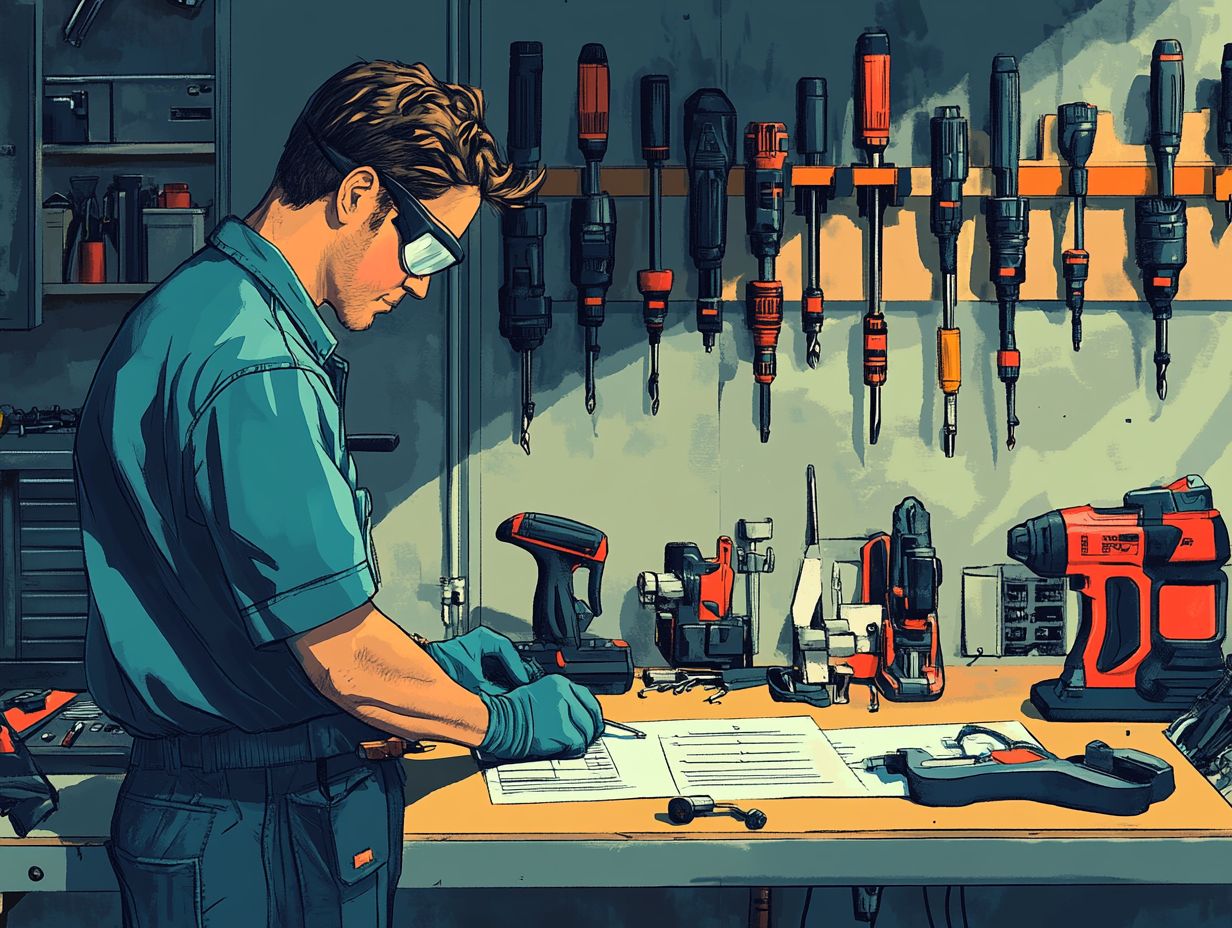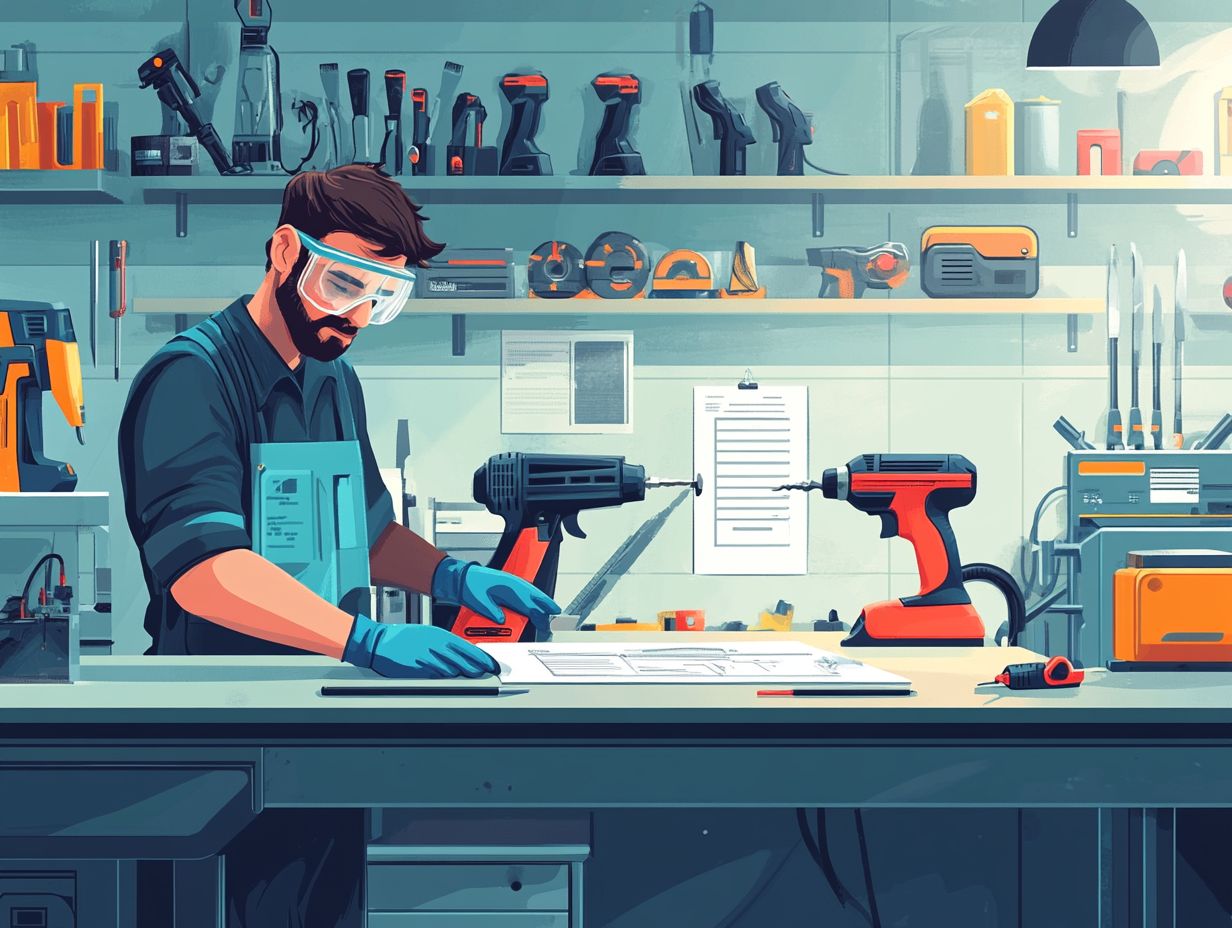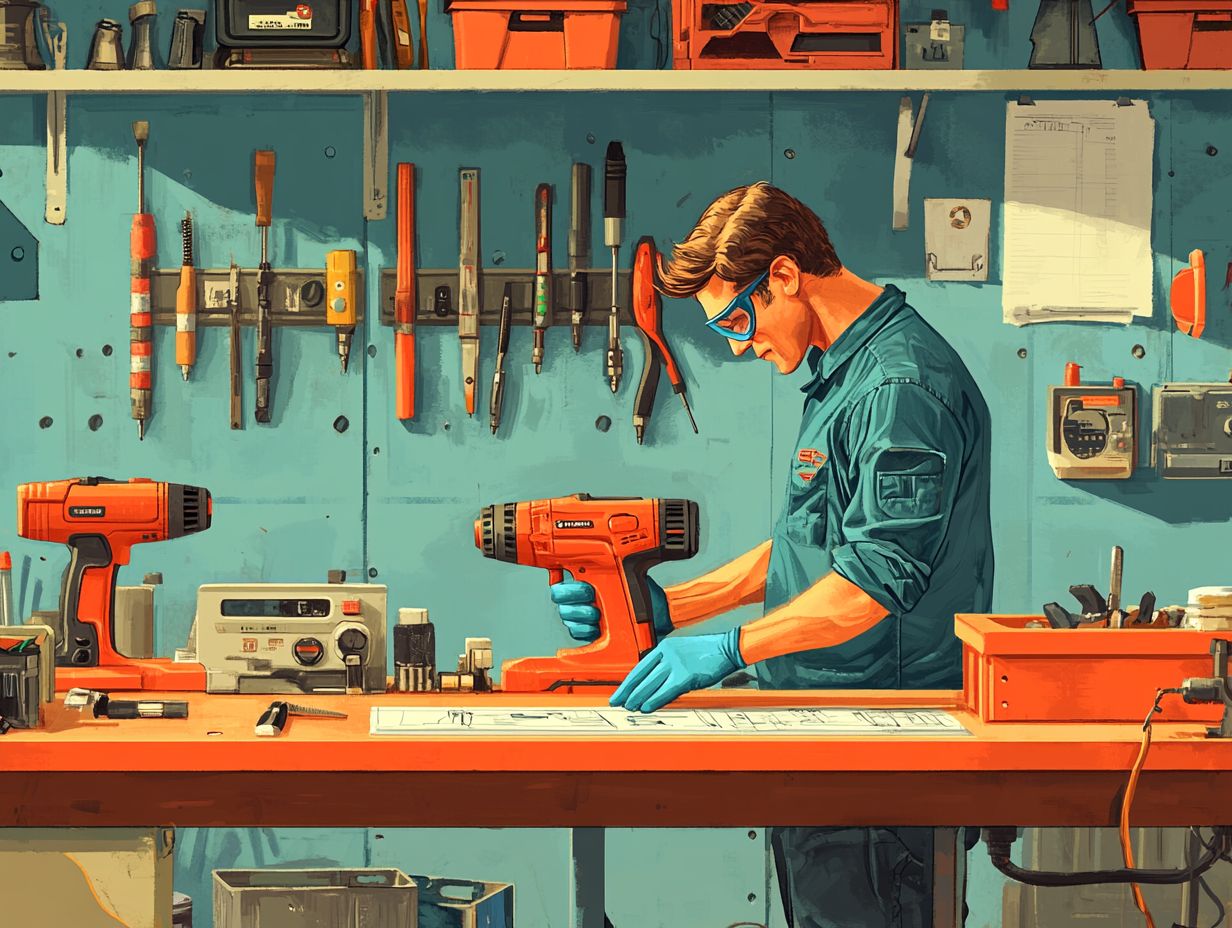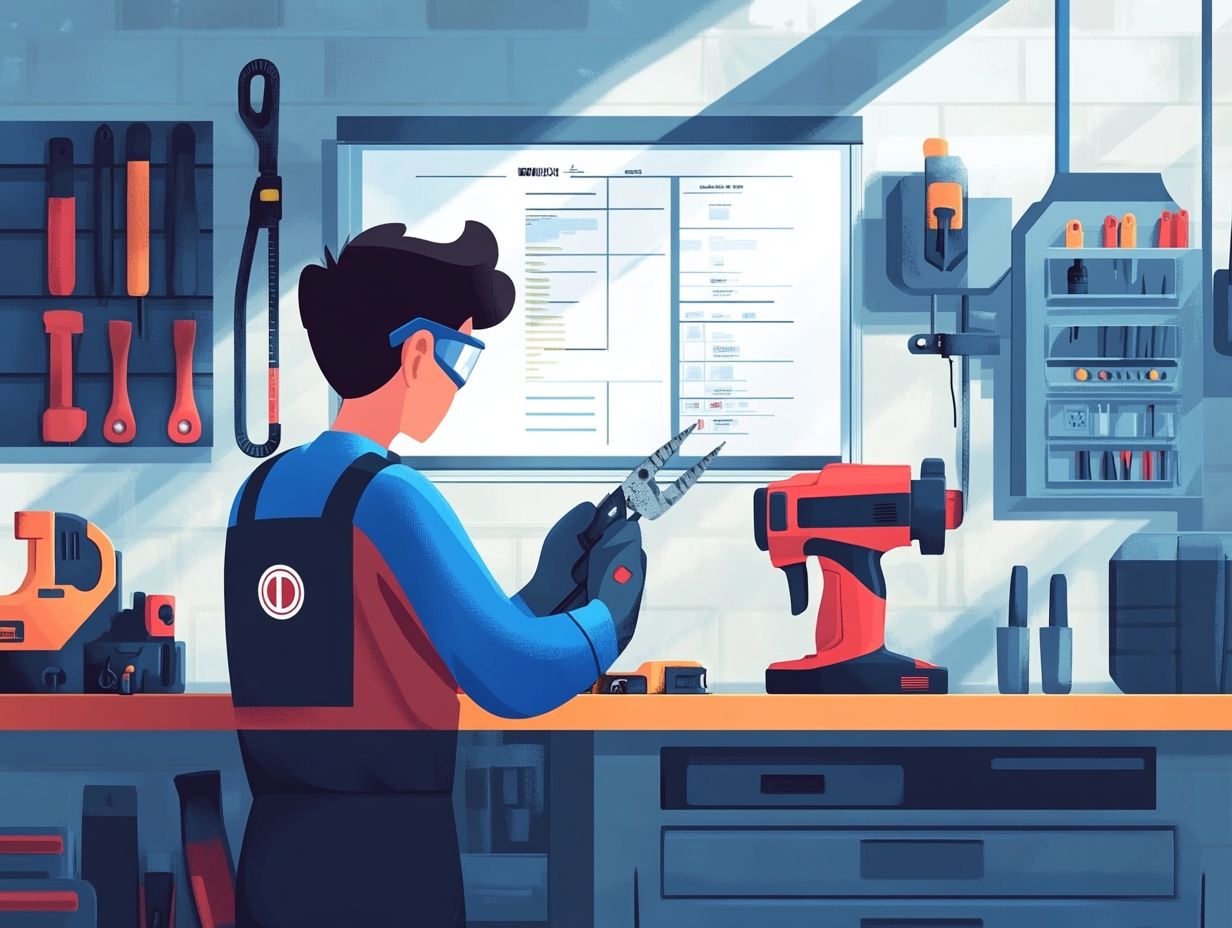How to Avoid Common Equipment Pitfalls
In any industry, equipment serves as the backbone of your productivity and efficiency. Neglecting common equipment pitfalls can result in costly downtime and serious safety hazards, leading to excessive maintenance costs.
This article delves into the significance of recognizing and steering clear of these pitfalls, including poor maintenance and inadequate training. It guides you on how to identify potential issues through regular inspections and employee feedback. It also offers practical solutions to ensure your operations run seamlessly.
Whether you re overseeing a large facility or managing a small workshop, grasping these insights is essential for achieving lasting success in avoiding costly repairs and equipment failures.
Contents
- Key Takeaways:
- Why is it Important to Avoid Equipment Pitfalls?
- What are Some Common Equipment Pitfalls?
- How to Identify Equipment Pitfalls?
- How to Avoid Equipment Pitfalls?
- Frequently Asked Questions
- What are some common equipment pitfalls that people often encounter?
- How can using outdated equipment lead to potential pitfalls?
- What are some important steps to take to avoid equipment pitfalls?
- How can not following safety protocols lead to equipment pitfalls?
- What are the consequences of not properly maintaining equipment?
- Why is it important to regularly update and upgrade equipment?
Key Takeaways:

- Regular maintenance and repairs are crucial in avoiding equipment pitfalls.
- Proper training and education of employees can prevent common equipment pitfalls.
- Upgrading to newer equipment can help avoid potential pitfalls and improve productivity.
Why is it Important to Avoid Equipment Pitfalls?
Avoiding equipment pitfalls is essential in the construction industry. Shipping construction equipment is a multifaceted task that can greatly influence your operational efficiency. When equipment management falls short, you risk incurring costly delays and unexpected downtime, which can disrupt project timelines and strain your budgets.
To enhance productivity, it s imperative for you to identify and address these common pitfalls. This ensures smooth operations and the effective transportation of heavy machinery and construction tools. Utilizing the right trailer can optimize lead time and avoid delays.
What are Some Common Equipment Pitfalls?
In the world of construction, navigating common equipment pitfalls is crucial for avoiding significant project disruptions and financial setbacks. These pitfalls can manifest in various ways, including inadequate maintenance of equipment, dependence on underqualified providers, and complications from challenging job site conditions that can hinder the transportation and handling of heavy machinery. Choosing the right transportation provider is crucial for avoiding these issues.
1. Poor Maintenance
Neglecting the maintenance of your construction equipment can lead to serious failures and costly repairs. This disrupts project timelines and jeopardizes safety on site. To ensure hydraulic systems, electrical systems, and other critical components are functioning at their best, it s essential to implement regular preventive maintenance routines conducted by qualified maintenance technicians.
Overlooking maintenance can lead to disastrous consequences, like a hydraulic failure that brings a crane to a standstill, causing delays and putting workers at risk. For example, skipping regular inspections of the fuel systems might lead to engine failure, resulting in extensive repairs that could have easily been avoided.
Utilizing technology that helps monitor and manage equipment performance allows you to access real-time data, helping you track usage patterns and identify wear and tear before it escalates into a significant issue. Establishing a robust maintenance routine not only keeps your projects on track but also saves you money in the long run! Engaging maintenance experts can further ensure thorough inspections and diligent upkeep of your equipment parts.
Don’t wait! Start implementing these strategies today to safeguard your equipment and enhance your operations!
2. Incorrect Usage
Incorrect usage of construction equipment can lead to accidents, equipment damage, and inefficiencies on the job site. It s crucial for operators to be well-trained and familiar with equipment specifications.
Without the right training, you might inadvertently engage in practices like overloading machinery or neglecting crucial safety checks. These oversights risk significant financial losses due to repairs and can lead to extended downtime, derailing project timelines and increasing costs.
Consider the consequences of improper crane handling, which could result in tipping or collision, causing personal injury and costly damages. That s why participating in complete training classes that emphasize best practices, including routine maintenance checks and being aware of your surroundings, is essential.
Regular refresher courses reinforce your skills and promote a safety-first culture on the job site, especially when dealing with transport complexities.
3. Lack of Training
A lack of training for equipment operators can lead to unsafe practices, resulting in accidents and increased downtime. It s crucial to ensure that all operators are well-trained in safety guidelines and fully familiar with job site conditions for effective transport and operation of construction machinery.
The consequences of insufficient training extend beyond immediate physical hazards. They significantly impact overall operational efficiency and productivity. Ongoing education keeps operators updated on the latest industry standards and reinforces safe operating techniques.
By investing in complete training classes that cover both technical and safety aspects, you can greatly reduce the likelihood of costly errors and equipment malfunctions. Such initiatives foster a culture of safety, enabling operators to identify and mitigate potential risks before they escalate into serious incidents.
Your commitment to training is a vital step in safeguarding both personnel and assets on the job site while ensuring compliance with regulations governing shipments.
4. Not Following Safety Guidelines

Not adhering to established safety guidelines can lead to disastrous consequences on construction sites, resulting in cargo damage, equipment malfunctions, and potential injuries to personnel. It is imperative for you and all equipment operators to diligently follow safety protocols to mitigate the risks of transporting and operating heavy machinery.
Wearing appropriate personal protective equipment (PPE), conducting regular safety audits, and engaging in ongoing safety training are crucial steps for everyone on-site. Neglecting these guidelines can have severe repercussions, leading to costly project delays and legal ramifications, along with an environment filled with fear and distrust among team members.
By fostering a safety-first culture, construction teams can significantly enhance morale, boost productivity, and ultimately protect their most valuable asset the workforce. When you prioritize safety, it reduces the risk of incidents and ensures that projects are completed efficiently and to the highest standards.
5. Using Outdated Equipment
Using outdated equipment in construction can cause many issues. These include skyrocketing maintenance costs and frequent equipment failures that disrupt workflow.
By staying updated with the latest technology and equipment, you can reduce the risk of malfunctions and enhance operational efficiency.
Relying on older machinery invites unexpected breakdowns that can halt your projects. It also burdens you with costly repairs that can gnaw away at your profit margins.
It is essential for construction professionals to recognize the value in investing in modern equipment. This investment boosts safety standards and amplifies productivity through superior performance.
Upgrading your equipment is vital for fostering innovation. It allows your teams to use advanced features that streamline workflows. Trucking services and specialized trailers help transport new machinery to your job sites. These trailers include different types of flatbed trailers designed for heavy loads.
Such tools ensure a seamless integration of state-of-the-art equipment that can dramatically improve project timelines and elevate your overall outcomes.
How to Identify Equipment Pitfalls?
Identifying equipment pitfalls is a proactive strategy. It requires regular inspections, gathering employee feedback, and meticulous data analysis to ensure your construction machinery operates efficiently and safely.
Engaging experienced providers and understanding equipment dimensions play a crucial role in this process. By working with maintenance experts, you can uncover hidden issues that might lead to costly repairs and operational inefficiencies.
1. Regular Inspections
Conducting regular inspections of your construction equipment is essential. It ensures that heavy machinery operates smoothly and helps identify potential issues before they become costly repairs.
Prioritizing maintenance checks optimizes transit timing and enhances overall operational efficiency.
Focus on critical areas such as hydraulic systems, brakes, and electrical components to catch early signs of wear and tear. This proactive approach helps avoid unexpected breakdowns and prolongs the lifespan of your machinery.
Moreover, maintain transparent communication with your transportation provider about cargo details and maintenance routines. These inspections allow you to schedule timely maintenance, reducing downtime and improving project timelines.
When your equipment is in peak condition, your teams can work seamlessly. This results in increased productivity and substantial cost savings.
Fostering a culture of regular inspections enhances operational effectiveness and creates a safer work environment while amplifying the advantages of a well-maintained fleet.
2. Employee Feedback
Gathering feedback from equipment operators offers invaluable insights into the performance and reliability of construction machinery. This helps uncover issues that routine maintenance checks might miss.
Establish consistent communication channels through surveys, suggestion boxes, or team meetings. Encourage operators to share their experiences and observations regarding equipment performance.
This open dialogue pinpoints specific maintenance needs and cultivates a culture of collaboration, where employees feel valued and heard.
When operators see their feedback taken seriously, morale improves, fostering a commitment to continuous improvement. This ensures that machinery operates at peak performance, reducing downtime and boosting operational efficiency.
3. Data Analysis
Utilizing data analysis tools and equipment tracking technology can significantly elevate your ability to monitor and predict equipment performance. This enables timely maintenance and enhances operational efficiency.
By diving into performance data, you can identify patterns that signal potential failures and address them before they become problematic.
This proactive approach extends the lifespan of your machinery while minimizing the chances of unexpected breakdowns. By leveraging insights from continuous data monitoring, you can implement a predictive maintenance strategy (anticipating equipment failures before they happen) that sharpens your decision-making processes.
This strategic shift helps you maximize equipment usage while cutting down on costly downtimes. With informed, data-driven strategies, you’re likely to see a significant reduction in operational costs, optimizing resource allocation and ensuring that everything runs like a well-oiled machine.
With these benefits, predictive maintenance is a must-have for your operations!
How to Avoid Equipment Pitfalls?

To effectively steer clear of equipment pitfalls in the construction industry, you must implement regular maintenance schedules, ensure operators receive proper training, adhere strictly to safety guidelines, and consider upgrading to newer equipment that provides enhanced reliability and performance.
This proactive approach safeguards your investments and fosters a culture of safety and efficiency on the job site.
1. Regular Maintenance and Repairs
Regular maintenance and timely repairs are crucial for the longevity and performance of your construction equipment. By sticking to a well-planned maintenance schedule, you can ensure that hydraulic systems and other essential components operate smoothly.
This minimizes downtime costs and avoids unexpected failures. Creating a comprehensive maintenance schedule should include regular inspections and servicing checks, with particular attention to high-risk areas like engines, brakes, and electrical systems.
It s important to prioritize repairs based on how often the equipment is used and the potential impact on safety and productivity. For example, tackling issues such as fluid leaks or worn belts before they turn into major problems can save you significant costs over time.
Routine maintenance boosts operational efficiency by keeping your equipment running like a well-oiled machine. It also reduces the chances of expensive repairs down the line.
This proactive approach allows you to allocate resources more effectively and maintain a competitive edge in your field.
2. Proper Training and Education
Providing proper training and education to equipment operators is paramount for promoting safety and efficiency on construction sites. When you invest in well-trained operators, you significantly lessen the likelihood of mistakes that can lead to equipment malfunctions.
These operators are also better equipped to tackle the complexities of handling heavy machinery. With a comprehensive training program that encompasses hands-on experience and safety education, you empower operators to develop the essential skills needed to navigate potential hazards.
This level of training boosts their confidence and reinforces the critical importance of adhering to safety protocols, which can dramatically decrease the risk of accidents.
Investing in operator training yields long-term benefits, such as minimizing downtime caused by equipment issues and reducing maintenance costs.
When operators are thoroughly prepared, they contribute to smoother operations, ultimately enhancing productivity and delivering cost savings for the entire project.
Implement a training program immediately for improved outcomes!
3. Following Safety Guidelines
Following established safety guidelines is essential for you as an equipment operator. It minimizes the risks associated with construction malfunctions and ensures a safe working environment.
By adhering to these guidelines, you also avoid delays that can arise from accidents or equipment damage on job sites. Putting safety first keeps everyone safe and happy on site!
Neglecting crucial safety protocols can lead to severe consequences, not just for individuals directly involved but for the entire project. A single oversight can result in injuries, financial losses, and even legal ramifications.
Cultivating a safety-oriented culture is crucial. This approach encourages everyone to actively participate in maintaining a safe work environment, ultimately benefiting the entire team and project.
4. Upgrading to Newer Equipment
Upgrading to newer equipment can dramatically enhance your operational efficiency, cut down on maintenance costs, and significantly reduce the risk of equipment failures during construction projects. The latest technologies frequently outperform outdated machinery in terms of performance, reliability, and efficiency.
Newer machines often include features that protect workers and reduce accidents. This results in a safer workspace for everyone involved.
These modern machines typically integrate smart technology, which is technology that helps you track and manage equipment efficiently. It provides real-time data information that is updated instantly on operations, giving you the power to make informed decisions swiftly.
As a result, investing in these upgrades not only streamlines your workflow but also improves overall project outcomes, increasing the likelihood of timely completions and reducing the chances of budget overruns.
By minimizing downtime caused by repairs and unscheduled maintenance, your construction teams can maintain productivity and ultimately deliver higher-quality results to clients.
Frequently Asked Questions
What are some common equipment pitfalls that people often encounter?

Some common equipment pitfalls include using outdated or malfunctioning equipment, not properly maintaining equipment, and not following safety protocols when using equipment.
How can using outdated equipment lead to potential pitfalls?
Outdated equipment may not function properly, leading to potential safety hazards or subpar performance. It may also not meet current industry standards or regulations, putting the user at risk for legal consequences.
What are some important steps to take to avoid equipment pitfalls?
Regularly inspecting equipment for wear and tear, following manufacturer’s instructions for proper maintenance, and ensuring all users are trained on proper usage can help avoid common equipment pitfalls.
How can not following safety protocols lead to equipment pitfalls?
Not following safety protocols, such as wearing appropriate personal protective equipment or using equipment in designated areas, can lead to accidents and potential injuries. It can also result in damage to the equipment, leading to additional costs and downtime.
What are the consequences of not properly maintaining equipment?
Not properly maintaining equipment can lead to breakdowns and unexpected downtime, resulting in loss of productivity and potential financial impacts. It can also compromise the safety and quality of work being done with the equipment.
Why is it important to regularly update and upgrade equipment?
Regularly updating your equipment is essential to keep everyone safe and meet industry standards. Doing so improves efficiency and productivity, and reduces the risk of unexpected breakdowns and costly repairs.






